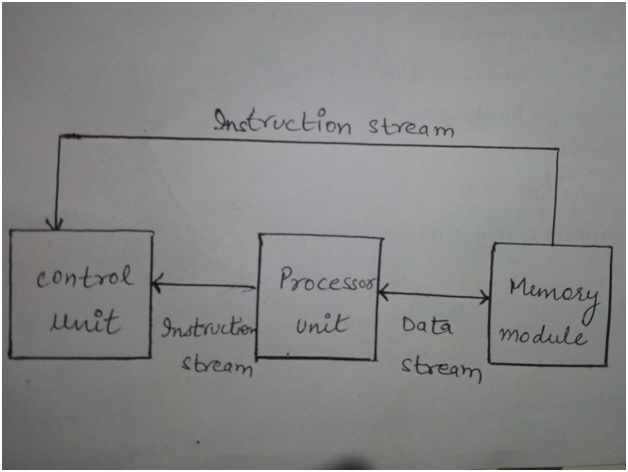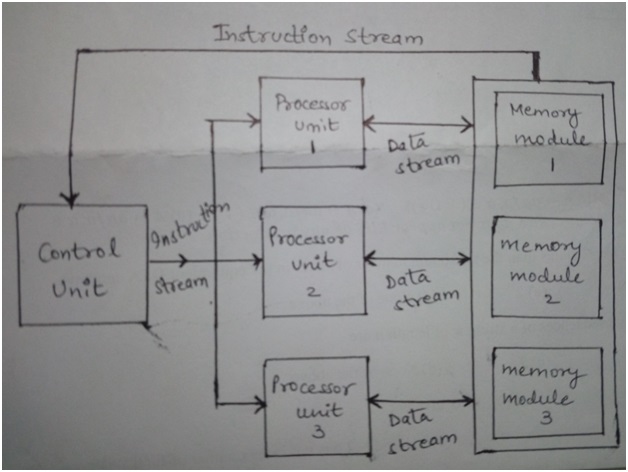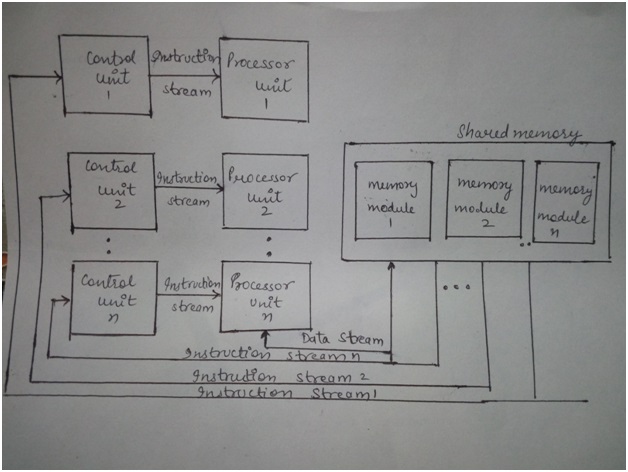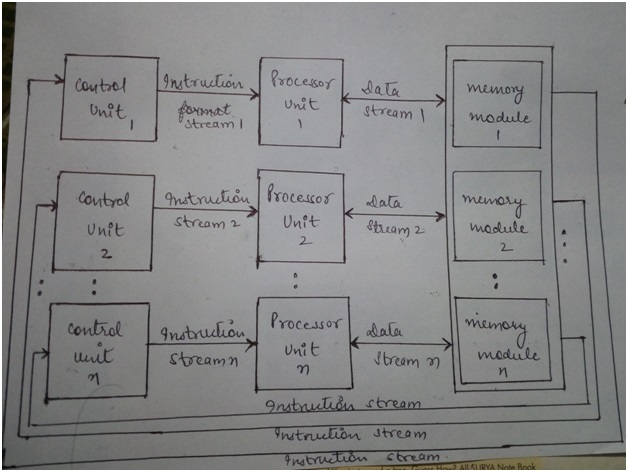并行计算机架构
并行处理 (Parallel Processing)
Parallel processing is processing of the data concurrently. We process the data concurrently to fulfill the demands of the increasingly high performance so that to achieve better throughput instead of processing each instruction sequentially as in a conventional computer.
并行处理是同时处理数据。 我们同时处理数据以满足日益增长的高性能的需求,从而实现更好的吞吐量,而不是像传统计算机那样顺序处理每个指令。
We can achieve parallelism in two ways:
我们可以通过两种方式实现并行性:
1)多功能单元 (1) Multiple functional units)
These systems have two or more ALUs so two or more instruction can be executed at the same time.
这些系统具有两个或多个ALU,因此可以同时执行两个或多个指令。
2)多个处理器 (2) Multiple processors)
These systems have two or more processors operating concurrently.
这些系统具有两个或多个同时运行的处理器。
The earlier processors had only one arithmetic and logic unit in its CPU. Furthermore, the ALU could only perform one function at a time, so that the process for executing a long sequence of arithmetic and logic instruction is quite slow. But nowadays the processors are available with multiple functional units, these multiple functional units used to execute the function of ALU which can be distributed and operate in parallel so that the speed of the processor's increases.
较早的处理器在其CPU中只有一个算术和逻辑单元。 此外,ALU一次只能执行一个功能,因此执行较长的算术和逻辑指令序列的过程非常缓慢。 但是如今,处理器具有多个功能单元,这些多个功能单元用于执行ALU的功能,这些功能单元可以分布并并行运行,从而提高了处理器的速度。
Micheal J.Flynn made an informal and widely used classification of parallelism processor in 1966, which is based on the number of simultaneous instruction and data streams seen by the processor during program execution.
Micheal J.Flynn在1966年对并行处理器进行了非正式且广泛使用的分类,该分类基于处理器在程序执行期间看到的同时指令和数据流的数量。
并行处理的分类 (Classifications of Parallel processing)
The classification divides computers into four major groups:
分类将计算机分为四个主要组:
Single instruction stream - single data stream
单指令流-单数据流
Single instruction stream - multiple data streams
单指令流-多个数据流
Multiple instruction streams - single data stream
多个指令流-单个数据流
Multiple instruction streams - multiple data streams
多个指令流-多个数据流
1)单个数据流-单个数据流(SISD) (1) Single data stream - single data stream (SISD))
Most conventional machines with one CPU containing a single arithmetic-logic unit capable of only scalar arithmetic fall into this category. They may have more than one functional unit, but all functional units are controlled by a single control unit.
具有一个CPU且仅包含一个仅能进行标量算术的单个算术逻辑单元的大多数传统机器就属于此类。 它们可能具有多个功能单元,但是所有功能单元都由一个控制单元控制。

2)单指令流–多个数据流(SIMD) (2) Single instruction stream – multiple data stream (SIMD))
SIMD has multiple processing units and one control unit. They correspond to array processors. In SIMD, all the processing elements received the same instruction from the control unit but operate on different data sets from distinct data streams.
SIMD具有多个处理单元和一个控制单元。 它们对应于阵列处理器。 在SIMD中,所有处理元件都从控制单元接收到相同的指令,但是对来自不同数据流的不同数据集进行操作。

3)多指令流单数据流(MISD) (3) Multiple instruction stream single data stream (MISD))
In MISD, there are n processor units each receiving distinct instruction operating over the same data stream and its derivatives. This means one processor becomes the input of the next processor.
在MISD中,有n个处理器单元,每个处理器单元都接收对同一数据流及其派生的不同指令。 这意味着一个处理器成为下一处理器的输入。

4)多指令流多数据流(MIMD) (4) Multiple instruction stream multiple data stream (MIMD))
In MIMD, there is more than one processor unit having the ability to execute several programs simultaneously. This category involves most of the multiprocessors system and multiple computers systems.
在MIMD中,有不止一个处理器单元能够同时执行多个程序。 此类别涉及大多数多处理器系统和多计算机系统。

翻译自: https://www.includehelp.com/cso/parallel-processing.aspx
并行计算机架构


















)
